Related Research Articles
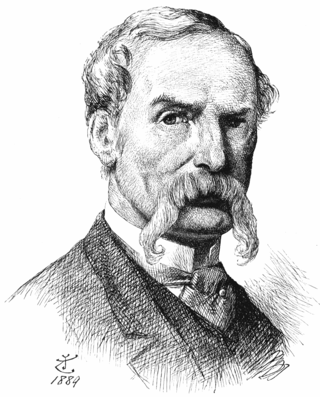
Sir John Tenniel was an English illustrator, graphic humourist and political cartoonist prominent in the second half of the 19th century. An alumnus of the Royal Academy of Arts in London, he was knighted for artistic achievements in 1893, the first such honour ever bestowed on an illustrator or cartoonist.

Harry Furniss was a British illustrator. He established his career on the Illustrated London News before moving to Punch. He also illustrated Lewis Carroll's novel Sylvie and Bruno.

Howard Pyle was an American illustrator, painter, and author, primarily of books for young people. He was a native of Wilmington, Delaware, and he spent the last year of his life in Florence, Italy.

Arthur Burdett Frost, usually cited as A. B. Frost, was an American illustrator, graphic artist, painter and comics writer. He is best known for his illustrations of Brer Rabbit and other characters in the Joel Chandler Harris' Uncle Remus books.

Frank Appleton Collymore MBE was a Barbadian literary editor, writer, poet, stage performer and painter. His nickname was "Barbadian Man of the Arts". He also taught for 50 years at Combermere School, where he sought out and encouraged prospective writers in his classes, notably George Lamming and Austin Clarke. Collymore was the founder and long-time editor of pioneering Caribbean literary magazine BIM.

Jessie Willcox Smith was an American illustrator during the Golden Age of American illustration. She was considered "one of the greatest pure illustrators". A contributor to books and magazines during the late 19th and early 20th centuries, Smith illustrated stories and articles for clients such as Century, Collier's, Leslie's Weekly, Harper's, McClure's, Scribners, and the Ladies' Home Journal. She had an ongoing relationship with Good Housekeeping, which included a long-running Mother Goose series of illustrations and also the creation of all of the Good Housekeeping covers from December 1917 to 1933. Among the more than 60 books that Smith illustrated were Louisa May Alcott's Little Women and An Old-Fashioned Girl, Henry Wadsworth Longfellow's Evangeline, and Robert Louis Stevenson's A Child's Garden of Verses.
Edward Randolph Emberley is an American artist and illustrator, best known for children's picture books.

Gordon Frederick Browne was an English artist and a prolific illustrator of children's books in the late 19th century and early 20th century. He was a meticulous craftsman and went to a great deal of effort to ensure that his illustrations were accurate. He illustrated six or seven books a year in addition to a huge volume of magazine illustration.
The Rivers of America Series is a landmark series of books on American rivers, for the most part written by literary figures rather than historians. The series spanned three publishers and thirty-seven years.
Hilary Knight is an American writer and artist. He is the illustrator of more than 50 books and the author of nine books. He is best known as the illustrator and co-creator of Kay Thompson's Eloise (1955) and others in the Eloise series.
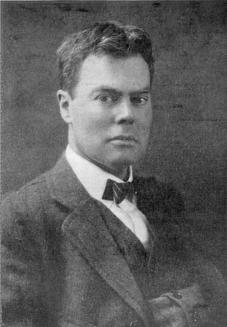
Thornton Oakley was an American artist and illustrator.

John Vernon Lord is an illustrator, author and teacher. He is widely recognized for his illustrations of various texts such as Aesop's Fables,The Nonsense Verse of Edward Lear; the Folio Society's Myths and Legends of the British Isles. He has also illustrated classics of English literature, including the works of Lewis Carroll and James Joyce. Lord has written and illustrated several children's books, which have been published and translated into multiple languages. His book The Giant Jam Sandwich has been in print since 1972

Florence Van Leer Nicholson Coates was an American poet, and women's rights advocate whose prolific output was published in many literary magazines, some of it set to music. She was mentored by the English poet Matthew Arnold, with whom she maintained a lifelong friendship. She was famous for her many nature poems, inspired by the flora and fauna of the Adirondacks, where she lived. She was also an advocate for women and equality. She would be elected poet laureate of Pennsylvania by the state Federation of Women's Clubs in 1915.
George Parks Hitchcock was an American actor, poet, playwright, teacher, labor activist, publisher, and painter. He is best known for creating Kayak, a poetry magazine that he published as a one-man operation from 1964 to 1984. Equally important, Hitchcock published writers under the "Kayak" imprint including the first two books by Charles Simic, second books by Philip Levine and Raymond Carver, translations by W.S. Merwin, and early books by Robert Bly and James Tate.
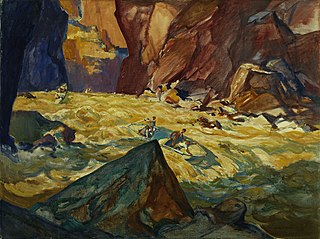
Henry Clarence Pitz was an American artist, illustrator, editor, author, and teacher who wrote and/or illustrated over 160 books, and dozens of magazine covers and articles. His most well-known book is The Brandywine Tradition (1968).
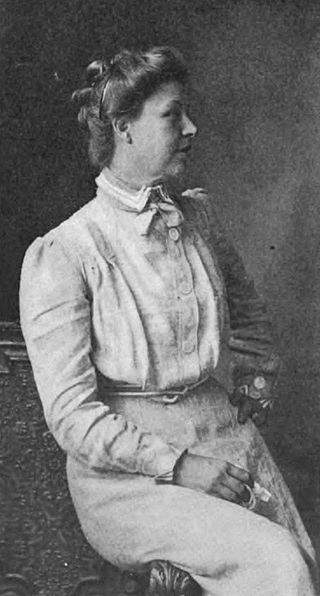
Katharine Pyle was an American illustrator and author, primarily of books for young people, an influential member of the Pyle artistic family, active in Philadelphia during the late 19th and early 20th centuries. A native of Wilmington, Delaware, and a social activist, she published several accounts of Delaware's colonial history.
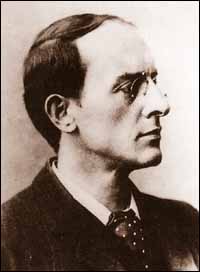
Walter Stanley Paget was an English illustrator of the late 19th and early 20th century, who signed his work as "Wal Paget". Paget held a gold medal from the Royal Academy of Arts, and was the youngest of three brothers, Henry M. Paget (eldest) and Sidney Paget, all illustrators.
John Archibald Webb (1866–1947) was a British painter and illustrator who illustrated over 150 books.
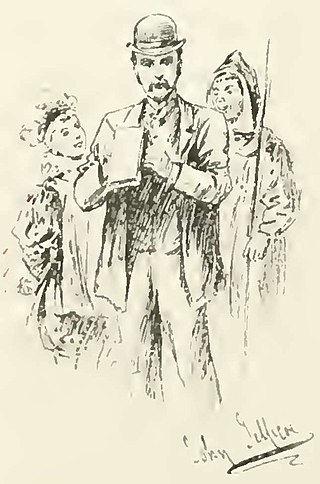
John Timothy Jellicoe was a British illustrator who produced large number of illustrations for newspapers and magazines as well as illustrating books and stories by a wide range of authors.

William Heysham Overend was a British marine artist and book illustrator who died prematurely in 1898.